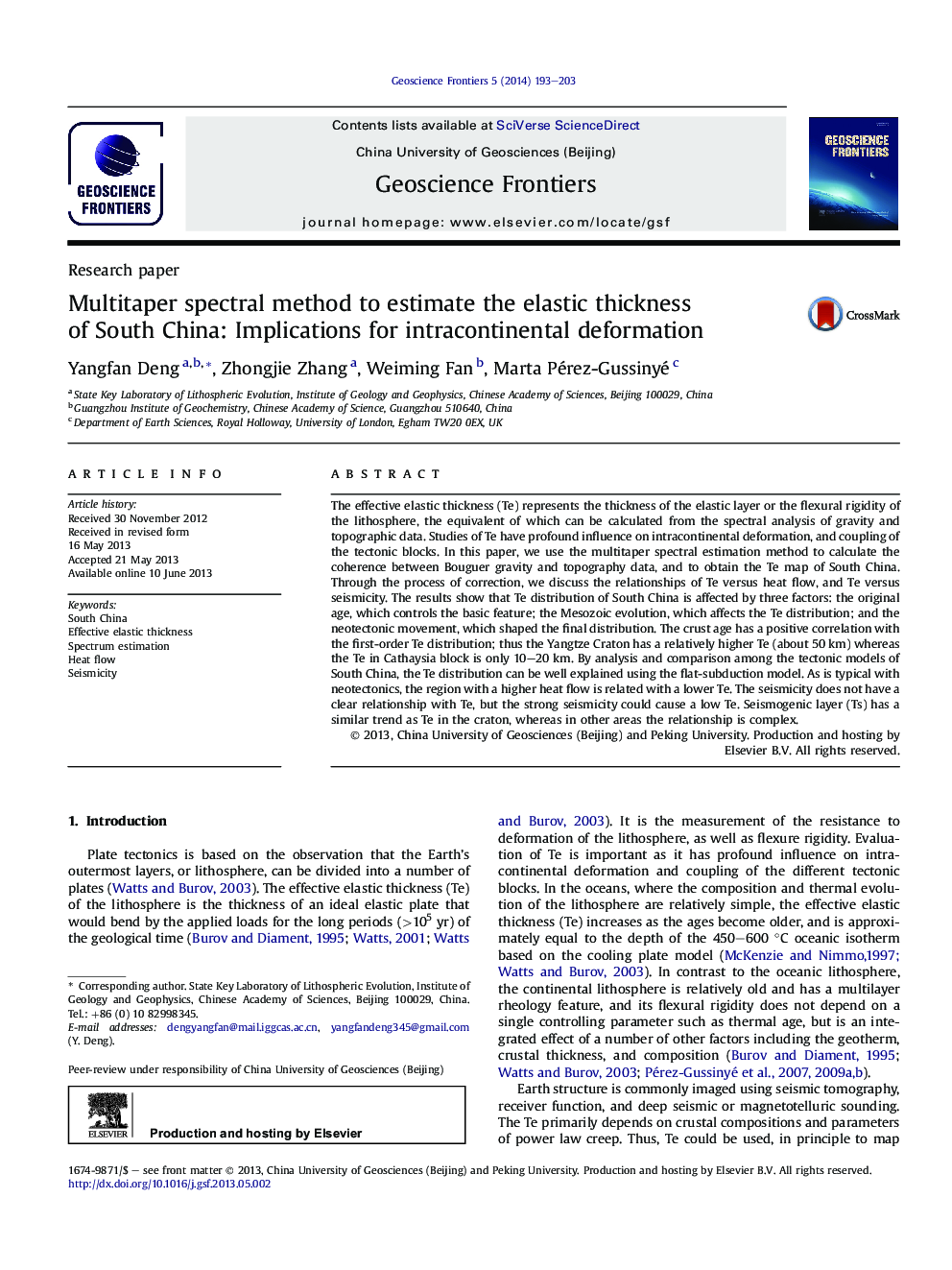| Article ID | Journal | Published Year | Pages | File Type |
|---|---|---|---|---|
| 4681791 | Geoscience Frontiers | 2014 | 11 Pages |
•Effective thickness of South China by using topography and gravity data.•The original crust age controls the basic Te distribution.•Mesozoic evolution has affected the Te and Neotectonic movement defines the final distribution.•Complex relationship between Ts and Te identified.
The effective elastic thickness (Te) represents the thickness of the elastic layer or the flexural rigidity of the lithosphere, the equivalent of which can be calculated from the spectral analysis of gravity and topographic data. Studies of Te have profound influence on intracontinental deformation, and coupling of the tectonic blocks. In this paper, we use the multitaper spectral estimation method to calculate the coherence between Bouguer gravity and topography data, and to obtain the Te map of South China. Through the process of correction, we discuss the relationships of Te versus heat flow, and Te versus seismicity. The results show that Te distribution of South China is affected by three factors: the original age, which controls the basic feature; the Mesozoic evolution, which affects the Te distribution; and the neotectonic movement, which shaped the final distribution. The crust age has a positive correlation with the first-order Te distribution; thus the Yangtze Craton has a relatively higher Te (about 50 km) whereas the Te in Cathaysia block is only 10–20 km. By analysis and comparison among the tectonic models of South China, the Te distribution can be well explained using the flat-subduction model. As is typical with neotectonics, the region with a higher heat flow is related with a lower Te. The seismicity does not have a clear relationship with Te, but the strong seismicity could cause a low Te. Seismogenic layer (Ts) has a similar trend as Te in the craton, whereas in other areas the relationship is complex.
Graphical abstractFigure optionsDownload full-size imageDownload as PowerPoint slide
